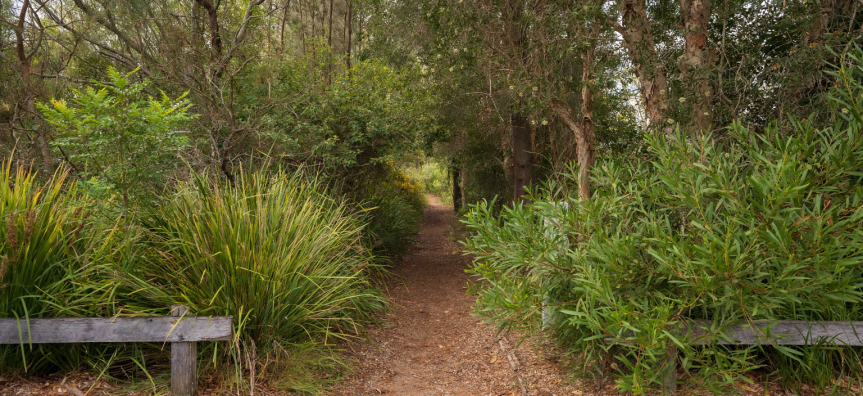
History
Warriewood's early settlers
The first settler, James Jenkins, was granted 350 acres at Warriewood and by 1829 he had established Cabbage Tree Hill farm, named after the cabbage tree palms growing on his property.
During the 1920s, new settlers came to Warriewood. The area expanded into a farming district and was known as ‘Glass City’ because the valley had close to 3,500 glasshouses, mainly cultivating tomatoes.
Production reached its peak between 1947 and 1954, but in the 1960s market gardening declined with some land taken over by nurseries.
Most of Warriewood, apart from some pockets of light industry, was zoned as a rural area until 1991 when the state government allowed a subdivision.
By 2000, the rural character of Warriewood began to change as the valley became a residential suburb.
Management
Water-sensitive urban design
More recent Warriewood developments have included some water-sensitive urban designs. Land planning and engineering are used to minimise environmental degradation and improve the area’s aesthetic and recreational appeal.
You may notice infiltration trenches, bio-retention ponds and constructed wetlands. These features mimic the wetland’s natural capacity to filter and cleanse water in a passive and efficient manner and are effective in minimising stormwater runoff and pollution.
We all have a role to play to ensure that our catchments and waterways remain clean and healthy by remembering that we only want rain down our drains. Find out more about how you can help reduce water pollution.
Fauna
Australia's most fascinating bats
If you are lucky, you may catch a glance of a large-footed myotis, one of several types of microbats found in this area.
It is one of Australia’s most fascinating bats as it is the only species of bat in Australia to capture fish for food. They have large feet which they use to trawl for food near the water’s surface. They are commonly seen at night, skimming the surface of the wetlands for fish and other aquatic animals.
The large-footed myotis tends to roost in caves, tree hollows, under bridges, in mines, road culverts and stormwater drains near permanent water.
